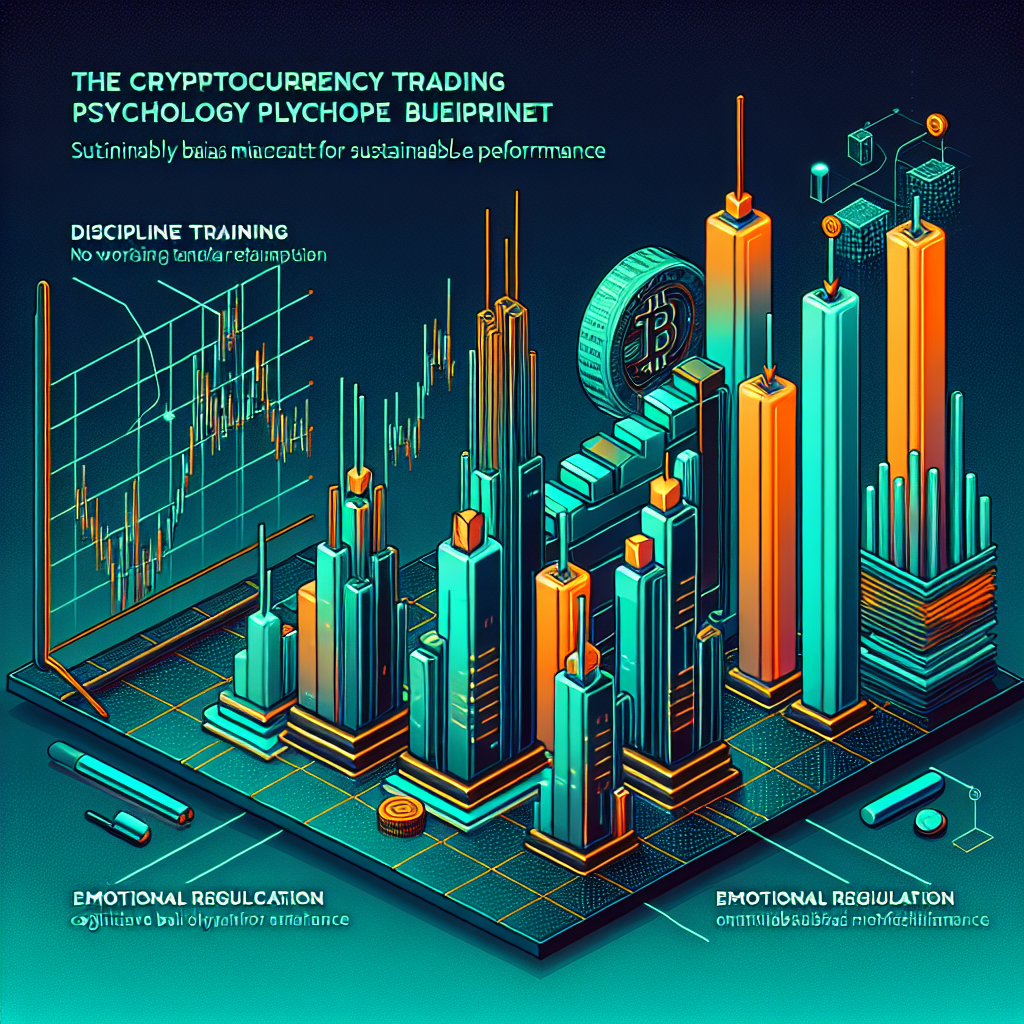Cryptocurrency Trading Psychology Blueprint: Discipline Training, Emotional Regulation, and Cognitive Bias Mitigation for Sustainable Performance

Introduction: Why Trading Psychology Is Your Ultimate Edge
In the hyper-volatile world of digital assets, technical indicators and on-chain analytics are only half the equation. The other half is trading psychology – the inner software that governs discipline, emotions, and decision-making biases. Without a robust psychological blueprint, even the most sophisticated strategy can crumble under market stress. This article delivers an actionable, 800-word roadmap for mastering cryptocurrency trading psychology through disciplined practice, emotional regulation, and cognitive bias mitigation so you can achieve sustainable performance.
Discipline Training: Building Unbreakable Process Habits
1. Codify a Rule-Based Trading Plan
Discipline begins with clarity. Draft a rule-based trading plan that defines your entry criteria, position sizing, stop-loss placement, and profit targets before capital is deployed. A written playbook converts abstract intention into measurable action, reducing impulsive trades spawned by market noise.
2. Implement Pre-Trade Checklists
Borrowed from aviation safety, checklists ensure that no critical step is skipped in the heat of the moment. Include task items such as verifying trend alignment across timeframes, confirming liquidity, and assessing news catalysts. By turning procedures into a checklist, you safeguard against hasty decisions when Bitcoin suddenly wicks $1,000 in seconds.
3. Use Time-Blocking for Analysis and Execution
Separating analysis from execution is a cornerstone of disciplined behavior. Block specific time windows for market research and reserve distinct periods for order placement. This structure prevents the endless screen-watching that leads to FOMO trades and mental fatigue.
4. Track Metrics Religiously
Journaling every trade — including screenshots, emotions, and deviations from the plan — transforms subjective experience into objective data. Review weekly to spot recurring lapses such as moving stop-losses or exceeding risk limits. Continuous feedback closes the loop between intention and performance, reinforcing disciplined habits.
Emotional Regulation: Mastering the Market Within
1. Recognize the Biological Stress Cycle
Price volatility triggers a primal fight-or-flight response driven by cortisol and adrenaline. A 15% drawdown in Ethereum may not jeopardize physical survival, yet the brain cannot distinguish financial danger from physical threat. Awareness of this biological wiring is the first step in regulating emotions rather than being ruled by them.
2. Deploy Breathing Protocols Before Critical Decisions
Evidence from sports psychology shows that box breathing — inhaling for four counts, holding for four, exhaling for four, holding again for four — lowers heart rate variability and calms the nervous system within two minutes. Use this technique before adjusting stops or adding to positions, anchoring the mind in rational clarity.
3. Set Emotional Stop-Losses Alongside Price Stop-Losses
Allocate a maximum number of losing trades or a daily dollar loss beyond which you step away from the screens. This emotional circuit breaker prevents tilt — the gambler’s spiral of revenge trades that can blow up an account faster than any market move.
4. Incorporate Recovery Rituals
After a trading session, engage in deliberate recovery: light exercise, journaling, or meditation. Psychological recovery rejuvenates cognitive resources, ensuring you approach the next session refreshed rather than carrying residual frustration or euphoria.
Cognitive Bias Mitigation: Defusing Mental Landmines
1. Confirmation Bias
Crypto Twitter threads and Discord channels can create echo chambers that reinforce existing beliefs. Counteract confirmation bias by actively seeking disconfirming evidence: if you’re bullish on Solana, read bearish analyses and on-chain outflows. Use a 2-to-1 rule — for every source supporting your thesis, review two skeptical sources.
2. Anchoring Bias
Price anchors, such as Bitcoin’s previous all-time high, can subconsciously dictate valuation models. Reframe analysis by focusing on current order-book depth, funding rates, and macro liquidity instead of historical price levels alone. Regularly refresh chart templates to avoid being anchored to outdated lines and zones.
3. Loss Aversion
Studies show that traders feel the pain of losses twice as intensely as the pleasure of gains, leading to premature profit-taking. Combat loss aversion by pre-defining risk-to-reward ratios no lower than 1:2 and scaling out of winners in tranches rather than exiting entirely after the first green candle.
4. Recency Bias
Explosive moves like a memecoin rally can sway judgment about the broader market. Maintain a multi-timeframe perspective: review monthly and weekly charts to contextualize short-term volatility. Use statistical measures such as standard deviation channels to evaluate whether recent moves are anomalies or part of a larger trend.
Integrating the Blueprint: A 30-Day Action Plan
Week 1: Write your rule-based plan and build a pre-trade checklist. Begin journaling every trade.
Week 2: Practice breathing protocols during simulated trades and implement emotional stop-loss thresholds.
Week 3: Audit your last 20 trades for cognitive biases and create countermeasures such as the 2-to-1 disconfirmation rule.
Week 4: Combine all elements, review performance metrics, and refine the blueprint for the next month. Sustainability emerges through iteration, not one-off fixes.
Conclusion: From Reactive to Proactive Performance
Market gyrations will never be fully predictable, but your response to them can be. By hardwiring discipline, regulating emotions, and neutralizing cognitive biases, you transform from a reactive trader chasing candles to a proactive operator executing a tested plan. Adopt this cryptocurrency trading psychology blueprint today, and equip yourself for sustainable performance in the digital asset arena.